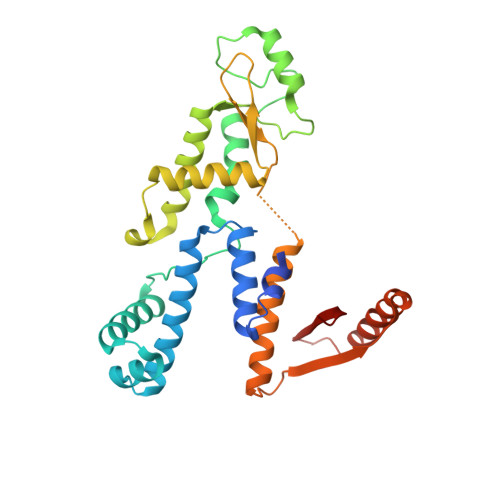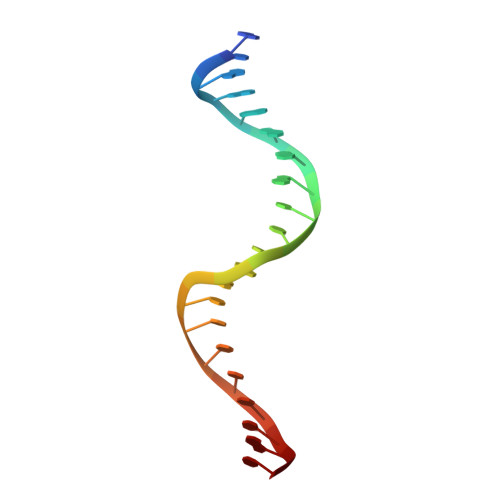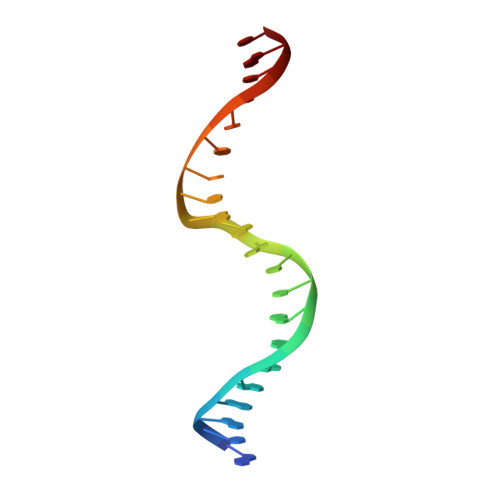Structural insights into HetR-PatS interaction involved in cyanobacterial pattern formation
Hu, H.X., Jiang, Y.L., Zhao, M.X., Cai, K., Liu, S., Wen, B., Lv, P., Zhang, Y., Peng, J., Zhong, H., Yu, H.M., Ren, Y.M., Zhang, Z., Tian, C., Wu, Q., Oliveberg, M., Zhang, C.C., Chen, Y., Zhou, C.Z.(2015) Sci Rep 5: 16470-16470
- PubMed: 26576507
- DOI: https://doi.org/10.1038/srep16470
- Primary Citation of Related Structures:
4YNL, 4YRV - PubMed Abstract:
The one-dimensional pattern of heterocyst in the model cyanobacterium Anabaena sp. PCC 7120 is coordinated by the transcription factor HetR and PatS peptide. Here we report the complex structures of HetR binding to DNA, and its hood domain (HetRHood) binding to a PatS-derived hexapeptide (PatS6) at 2.80 and 2.10 Å, respectively. The intertwined HetR dimer possesses a couple of novel HTH motifs, each of which consists of two canonical α-helices in the DNA-binding domain and an auxiliary α-helix from the flap domain of the neighboring subunit. Two PatS6 peptides bind to the lateral clefts of HetRHood, and trigger significant conformational changes of the flap domain, resulting in dissociation of the auxiliary α-helix and eventually release of HetR from the DNA major grove. These findings provide the structural insights into a prokaryotic example of Turing model.
Organizational Affiliation:
Hefei National Laboratory for Physical Sciences at the Microscale and School of Life Sciences, University of Science and Technology of China, Hefei Anhui 230027, China.





















